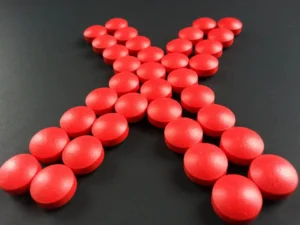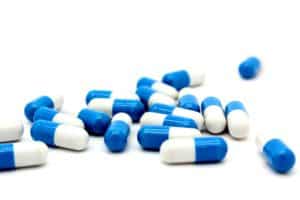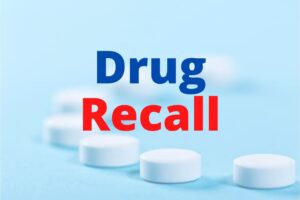- Forms: For Homoeopathy Medicines - December 22, 2024
- Key Notes on Revised Schedule M: Point No. 12 – Premises - December 22, 2024
- Key Notes on Revised Schedule M: Point No. 11 – Personnel - December 21, 2024
Last Updated on January 3, 2024 by The Health Master
Quality Assurance Vs Quality Control
Quality Assurance Vs Quality Control: In the pharmaceutical industry, ensuring the safety and efficacy of products is of the utmost importance.
To achieve this, two key practices are employed:
- Quality Assurance (QA)
- Quality Control (QC)
While these terms are often used interchangeably, they have distinct roles and responsibilities in maintaining overall quality standards.
This article aims to shed light on the difference between Quality Assurance and Quality Control in the pharma industry.
Quality Assurance (QA):
Quality Assurance is a proactive approach aimed at preventing defects, ensuring compliance with regulations, and maintaining consistent quality throughout the entire production process.
Here are the key aspects of Quality Assurance:
Process Development and Implementation:
- QA focuses on establishing robust processes and protocols for manufacturing pharmaceutical products.
- It involves drafting standard operating procedures (SOPs) that encompass guidelines, specifications, and best practices to follow during production.
- QA ensures that these processes are implemented correctly across all stages of manufacturing.
Documentation and Compliance:
- QA emphasizes meticulous documentation of procedures, test results, and other relevant data.
- It involves creating and maintaining comprehensive records, including batch records, equipment calibration logs, and validation reports.
- QA ensures compliance with regulatory requirements, such as Good Manufacturing Practices (GMP) and International Council for Harmonization of Technical Requirements for Pharmaceuticals for Human Use (ICH) guidelines.
Training and Auditing:
- QA oversees training programs to ensure that all personnel involved in the manufacturing process are competent and well-informed.
- It conducts regular internal and external audits to assess compliance with quality standards and regulatory requirements.
- QA identifies areas for improvement and takes corrective action when necessary.
Quality Control (QC):
Quality Control, on the other hand, is a reactive approach that focuses on evaluating the final product’s quality and detecting any defects or deviations from established standards.
Here are the key aspects of Quality Control:
Testing and Analysis:
- QC involves conducting various tests and analyses on pharmaceutical products, starting from raw materials to finished goods.
- It ensures that products meet predefined specifications and standards in terms of identity, purity, potency, dissolution rate, and stability.
- QC utilizes sophisticated analytical techniques, such as high-performance liquid chromatography (HPLC), gas chromatography (GC), and mass spectrometry (MS), to assess product quality.
Product Release:
- QC plays a critical role in the release of pharmaceutical products to the market.
- It examines product samples, compares results against predetermined acceptance criteria, and approves or rejects batches based on quality standards.
- QC ensures that only safe, effective, and high-quality products are released for distribution.
Out-of-Specification Investigations:
- In the event of deviations or out-of-specification results, QC investigates the root causes of the issue.
- It analyzes potential factors that may have contributed to the non-compliance and takes appropriate corrective and preventive actions.
- QC works closely with QA to address the identified issues and prevent their recurrence.
Conclusion:
In summary, Quality Assurance and Quality Control are distinct yet interrelated functions in the pharmaceutical industry.
Quality Assurance primarily focuses on establishing and maintaining robust processes, ensuring compliance, and preventing defects, while Quality Control centers around evaluating product quality and ensuring adherence to predefined standards.
Both QA and QC are essential components of pharmaceutical manufacturing, working together to uphold the highest standards of safety, efficacy, and quality in the industry.
By understanding the difference between QA and QC, pharmaceutical companies can strengthen their quality management systems and deliver reliable products to patients worldwide.
Compiled by:
Rakesh Dahiya, SDCO cum Licensing Authority, FDA Haryana
Quality Assurance in the Pharmaceutical Industry
NABL certification for Laboratories: Let’s understand
Major FDA audit findings about Equipment and Instruments
Equipment and Instruments: Maintenance, difference and importance in the Pharma Industry
Quality Assurance in the Pharmaceutical Industry
Upcoming events: Pharma, Cosmetics, Homoeopathy & Medical Devices
Cosmetics Testing in India: A Comprehensive Guide
Difference between Validation and Calibration in the Pharma Industry
Calibration of Laboratory Instruments
Difference: Disintegration and Dissolution test in pharma industry
Understanding DQ, IQ, PQ, and OQ in the Pharma Industry
Duties and responsibilities of QA person in Pharma Industry
Dissolution test: Importance in Pharma Industry
NSQ Drug: Route cause analysis and CAPA
BA / BE Studies: Bioavailability & Bioequivalence
For informative videos by The Health Master, click on the below YouTube icon:
For informative videos on Medical Store / Pharmacy, click on the below YouTube icon:
For informative videos on the news regarding Pharma / Medical Devices / Cosmetics / Homoeopathy etc., click on the below YouTube icon:
For informative videos on consumer awareness, click on the below YouTube icon:












